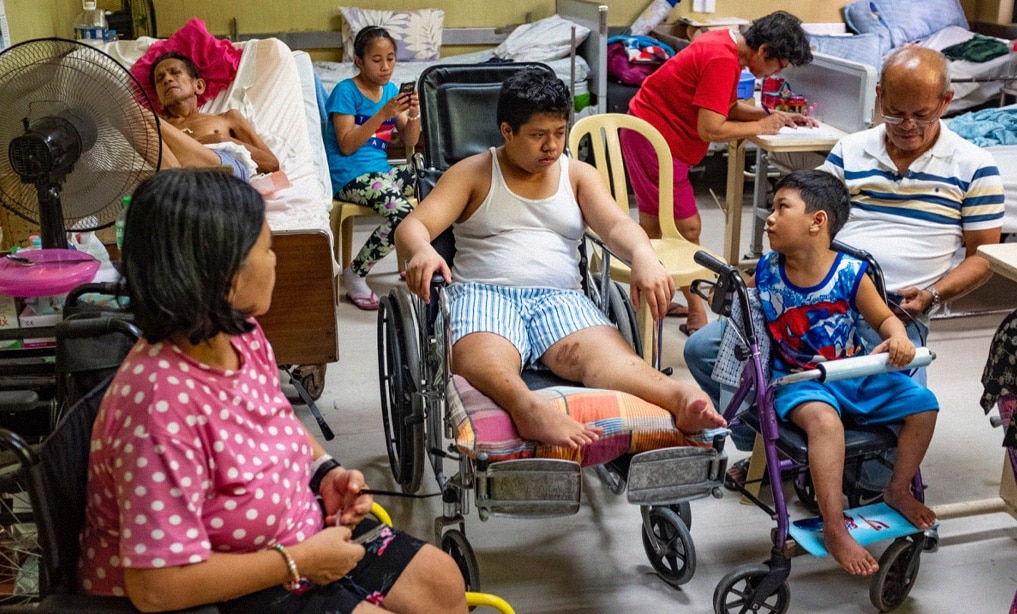MANY people face risks in their lives that affect their health, but persons with disabilities are in a more precarious position.
Health inequities are leading to shorter lives globally for many PWDs, according to the World Health Organization.
The WHO’s Global report on health equity for persons with disabilities found that PWDs have a higher risk of dying much earlier— even up to 20 years earlier—compared to others.
PWDs also have an increased risk of developing chronic conditions, with up to double the risk of asthma, depression, diabetes, obesity, oral diseases, and stroke, according to the WHO.
Many of these outcomes are due to “avoidable, unfair and unjust factors,” it said.
Examples include negative attitudes of healthcare providers, health information provided in formats that cannot be understood, and difficulties accessing a health center due to the physical environment, lack of transport or financial barriers, it said.
“Health systems should be alleviating the challenges that people with disabilities face, not adding to them,” said WHO Director-General, Dr Tedros Adhanom Ghebreyesus.
There are an estimated 1.3 billion people worldwide who experience significant disability, and the pandemic also made things harder for them.
“Many persons with disabilities and their families have been disproportionately affected by social movement restrictions, physical distancing requirements, and prioritization of certain health services— all of which have affected their access to essential services which are critical to maintaining health and functioning,” Ghebreyesus said in the report.
PWDs’ health challenges
According to the WHO, health inequities affect PWDs’ mortality, morbidity, and functioning.
These inequities arise from several factors.
Social stigma
One is structural. Cultural and societal values manifest in ableism, stigma and discrimination which could lead to PWDs being prevented from or delayed from accessing health care, according to the WHO.
These could result in their abandonment, being subjected to traditional or alternative services against their will, delayed diagnosis and care, and hindered access to health care, it said.
PWDs may also have concerns about overburdening their families when accessing health care, or may have feelings of shame regarding sexual and reproductive health services.
Societal stigmatization and discrimination have likewise been directly linked to increased suicidality, especially among those with psychosocial disabilities.
Discriminatory attitudes by health care professionals also affect PWDs’ mortality, morbidity, and functioning.
Poverty, lack of education, violence
Socioeconomic factors also contribute to the health inequities that PWDs experience, according to the WHO.
PWDs and their households carry added costs associated with the disability, and a higher proportion of PWDs live under the national or international poverty line, it said.
This means they have reduced access to timely care and support, experience interrupted treatment, or are unable to pay for their devices. They also feel stress because of their increased reliance on family members.
They are less likely to attend school and have low literacy rates, which also pose an obstacle to accessing health information, tools, and resources. They are also less likely to be employed.
“Lack of education and unemployment are associated with lower life expectancy at birth and premature mortality,” it said.
Lower health literacy also leads to poor vaccination rates in children and unhealthy behavior in adults.
Many persons with disabilities experience homelessness or live in institutions, and in the latter, they may experience abuse restrictive practices and be away from their families.
“Social isolation and loneliness associated with the place to live are a strong determinant of poor health and well-being in persons with disabilities,” it said.
The report also said a far larger percentage of households with PWDs “do not always have food to eat” compared to others. Children with disabilities are more likely to be stunted and wasted compared to their peers.
Inaccessible transportation can hinder PWDs from accessing necessities such as food, water or sanitation, and delay access to healthcare.
PWDs are also 1.5 times at greater risk of violence, with the risk increasing for those with intellectual or psychosocial disabilities as well as women and children with disabilities. They often experience injuries or sexually transmitted diseases that cause their health to deteriorate.
Moreover, PWDs are more vulnerable during disasters caused by climate change. They may be less able to escape hazards, lose essential medications and assistive devices, and may be left behind during evacuations.
They are more likely to experience health complications following a disaster due to difficulties accessing basic water facilities, shelter, or healthcare.
Health system problems
The health of PWDs is also affected by the lack of knowledge, skills, and competencies by health and care professionals, according to the WHO. These workers may fail to recognize comorbidities and barriers that prevent PWDs from accessing health services to prevent disease.
The lack of accommodations for PWDs may also lead to poor communication with health care professionals, with some finding it hard to express what they need.
Moreover, health and care workers may have negative attitudes and beliefs about PWDs which can manifest in discriminatory practices such as refusing to provide them with health services, forced sterilization, negative assumptions about their ability to make decisions about their welfare, or undermining their autonomy and independence.
The WHO also said health coverage programs in low and middle income countries may not fully cover the health needs of PWDs and their families. Funding for accessibility is also low in many countries.
Gaps in service delivery likewise put PWDs’ health at a disadvantage. In many countries, primary care services are not always available and this disproportionately affect PWDs who have difficulty accessing rehabilitation and assistive technologies, it said.
How to help PWDs
The WHO recommends taking the primary health care approach to strengthen health systems. It said addressing health inequities for PWDs should not be done as a stand alone activity, but should be part of a strategy integrated into the overall efforts of a country to strengthen its health systems.

Photo credit: WHO
The WHO recommends targeted actions in the following:
Political commitment, leadership, and governance– This means prioritizing the health of the population and providing strategic direction and priorities to the agenda of the health sector.
Health financing– This means ensuring that all people have access to and use needed services without the risk of financial hardship.
Engagement of stakeholders and private sector providers– This encompasses building collaborative relationships to enable the health sector and stakeholders to jointly define health priorities, identify solutions, and plan actions.
Models of care– This refers to how services should be delivered. Thee should change accordin to the health priorities of the population and can be tailored according to local contexts.
Health and care workforce– This should be strengthened in order to achieve sustainable development goals and global health priorities. Integrating training on disability in the curricula for health workers has long been requested by civil society.
Physical infrastructure– This means ensuring that the needs of PWDs are taken into account and would be accommodated in the design of facilities and infrastructure.
Digital technologies for health– This means making digital technologies accessible to PWDs to help them receive better health care
Quality of care– This entails improving the performance of health service delivery, maintaining trust among service users, and ensuring the sustainability of the health system, among others.
Monitoring and evaluation– This involves keeping an eye on the performance of the health system to ensure that policies, actions or decisions are implemented as planned.
Health policy and systems research– This is important for decision makers in the health sector to make informed decisions about which actions will contribute to universal health care.
Banner photo credit: World Health Organization








